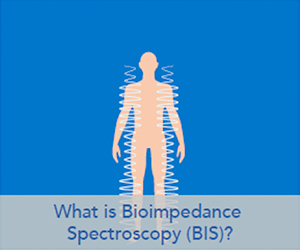- Get Started!
- About Us
- Clinical Research
- Our Company
Have you had a discussion with your doctor about lymphedema? Here’s how to get started:
Educate & Inform Your Cancer Care Team
Your doctor, nurse, or therapist may not be aware of the latest technologies for early detection of lymphedema. Print this handout and take it to your next visit.
DOWNLOAD
Questions to Ask your Doctor
Download and print these questions to discuss with your doctor during your next visit.
DOWNLOAD
Find a Provider
Search for local institutions in your area that offer L-Dex testing.
FIND A PROVIDER
Learn More About Lymphedema Prevention
Learn more about risk factors and lymphedema prevention.
LEARN MORE
Watch our recent symposium
Lymphedema Can't Ruin my Survivorship: Exploring the Facts and Myths of Secondary Lymphedema Prevention
Watch Now
Preventing Cancer-Related Lymphedema
Advances in medical treatment have dramatically improved cancer care and survivorship. However, of the nearly 17 million cancer survivors living in the U.S., it is estimated that one in three of those treated for the cancers below will develop lymphedema.1,2 Those most at risk are patients who undergo surgery, radiation therapy or Taxane-based chemotherapy.
Know your L-Dex® score
Early Detection Starts with an L-Dex Score. Previously, cancer survivors were not routinely monitored, but with L-Dex, your healthcare provider has a tool that aids in early detection of lymphedema. L-Dex is a measurement of fluid buildup in your at-risk limb compared to a healthy limb. It uses noninvasive bioimpedance spectroscopy (BIS), which is capable of detecting fluid changes as small as 2.4 tablespoons (36 ml) and takes less than 30 seconds to complete. For best results, at-risk patients receive a baseline measurement before cancer treatment begins and are then monitored regularly after treatment.
See how a Lymphedema Prevention Program can improve clinical outcomes for secondary lymphedema:
WATCH
Watch how a surveillance model of care can help cancer patients avoid progression of secondary lymphedema:
WATCH
References:
1. Herd-Smith, A., et al., Prognostic factors for lymphedema after primary treatment of breast carcinoma. Cancer, 2001. 92(7): p. 1783-7
2. Shah C, et al. Bioimpedance Spectroscopy for Breast Cancer Related Lymphedema Assessment: Clinical Practice Guidelines. The Breast Journal 2016;DOI: 10.1111/tbj.12647.
ImpediMed’s bioimpedance spectroscopy (BIS) devices have been studied and clinically validated in the areas of lymphedema, heart failure, body composition and veterinary BIS research.





